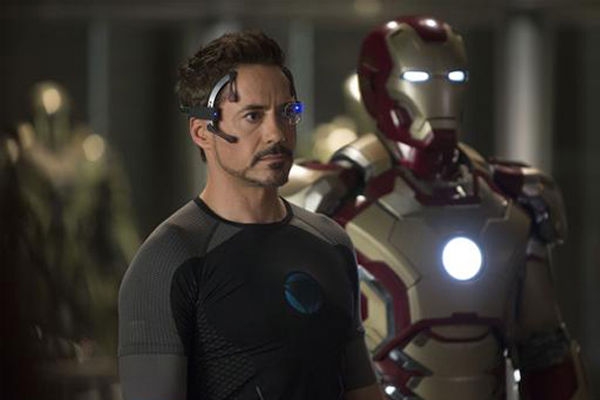
Putting the “Science” in “Science Fiction” – Judge Dredd
Judge Dredd, the protagonist of the comic and films that share his name, is a law enforcement officer in a world filled with high-tech devices. Although technological wonders like fully autonomous robots, anti-gravity vehicles and portable laser weapons are common, likely the best-known device in the series is the Lawgiver Mk. II.
The Lawgiver Mk. II is a powerful handgun that is issued to all judges to help them perform their duties, and is capable of many feats beyond the capabilities of conventional firearms. Although handgun-sized, the Lawgiver has a range of up to three miles, has a built-in video camera sight that allows the user to see exactly where the gun is pointing, voice activation, and palm-recognition system that causes the weapon to explode if anyone besides its owner tries to use it. When all of these capabilities are combined with the weapon’s ability to fire multiple types of ammunition, it creates a truly fearsome package that instills terror in anyone who must face a judge armed with a Lawgiver Mk. II.
The Lawgiver carries a series of magazines loaded with different types of rounds, and the user can choose which one to use in order to properly match the situation. These rounds include armor-piercing shells, high-explosive rounds, specially-designed ricochet bullets and even rounds that can lock onto a target’s heat signature and track it. Creating a weapon system that uses multiple types of ammunition is entirely possible, and is even commonplace among the designers of armoured vehicles. The large guns carried by modern tanks have access to a wide variety of rounds, including various types of armour piercing and high-explosive, cluster, flare and even fireworks shells. Some of these ammunition types are more high-tech than others, and they vary in the technology required to create them. In terms of explosive and incendiary rounds for small arms, they have existed since long before the First World War and were banned from use in small arms all the way back to the St. Petersburg Declaration of 1868.

The reason this ban is strictly based around small arms is that while these types of rounds are often necessary in order to disable or destroy vehicles, small arms are designed for use against human beings, and in these cases the damage these weapons cause is considered both inhumane and unnecessary. Although these types of specialty bullets are not used for combat due to the ethical concerns surrounding them, it would be possible to create them using modern technology if circumstances required it.
Although creating explosive and incendiary rounds for small arms is currently possible, it would be a much more difficult task to develop a bullet capable of tracking a target that was small enough to be fired from a pistol. There are already examples of weapons that guide themselves to the target while in flight, but these are bombs, missiles and other large projectiles with room to carry the sophisticated electronics that a guided weapon requires. In order to create a small guided bullet, the guidance system and sensors would have to be miniaturized to a great degree. Another problem is that modern guided weapons generally track heat, radar signatures or spots illuminated by a laser designator in order to strike their targets. Since humans generally do not give off radar waves, a guided bullet would need to rely on a laser designator or body heat to hit its mark, and since humans do not give off as much heat as a jet fighter or armoured vehicle, these sensors would need to be made much more precise.

The other problem lies in how a guided bullet would steer itself. Most guided weapons use a combination of fins and a rocket motor or the high speeds caused by a long free fall to allow them to steer, but a conventional bullet could not use a rocket and its velocity decreases as it flies, which makes steering problematic. However, despite these issues, the United States military is working on ways to overcome these problems. The engineers at Sandia are already making progress on a “smart bullet” that overcomes some of these problems. This .50 calibre projectile uses an optical sensor on its tip to detect a laser that illuminates the target, then uses small moveable fins on the sides of the bullet to steer it. There are still some issues with the design, as so far it does not come in any smaller size than .50 calibre and must be fired from a smoothbore weapon, but the smart bullet has already shown great increases in accuracy.

bullet to steer it. CREDIT: electronicsweekly.com
As the technology becomes more advanced, these weapons will open up new possibilities, such as using targeting lasers on aerial drones to designate targets for troops on the ground. As smart bullets become more sophisticated and cheaper to manufacture, it is possible that unguided projectiles will become a thing of the past.
The invention of smart bullets will not only increase a soldier’s effectiveness in combat, but will also help to reduce the number of innocent civilians and friendly troops who are accidentally injured. Although advances in this field will lead to new weapons systems, it is heartening to know that these advances will be used to help protect innocent bystanders, as well as win wars. As new advances are made in warfare, it is a welcome thought to remember that agreements like the Geneva Convention exist to help minimize military loss of life and to protect civilians on the field of battle.
TOP PHOTO: judgedredd.wikia.com






